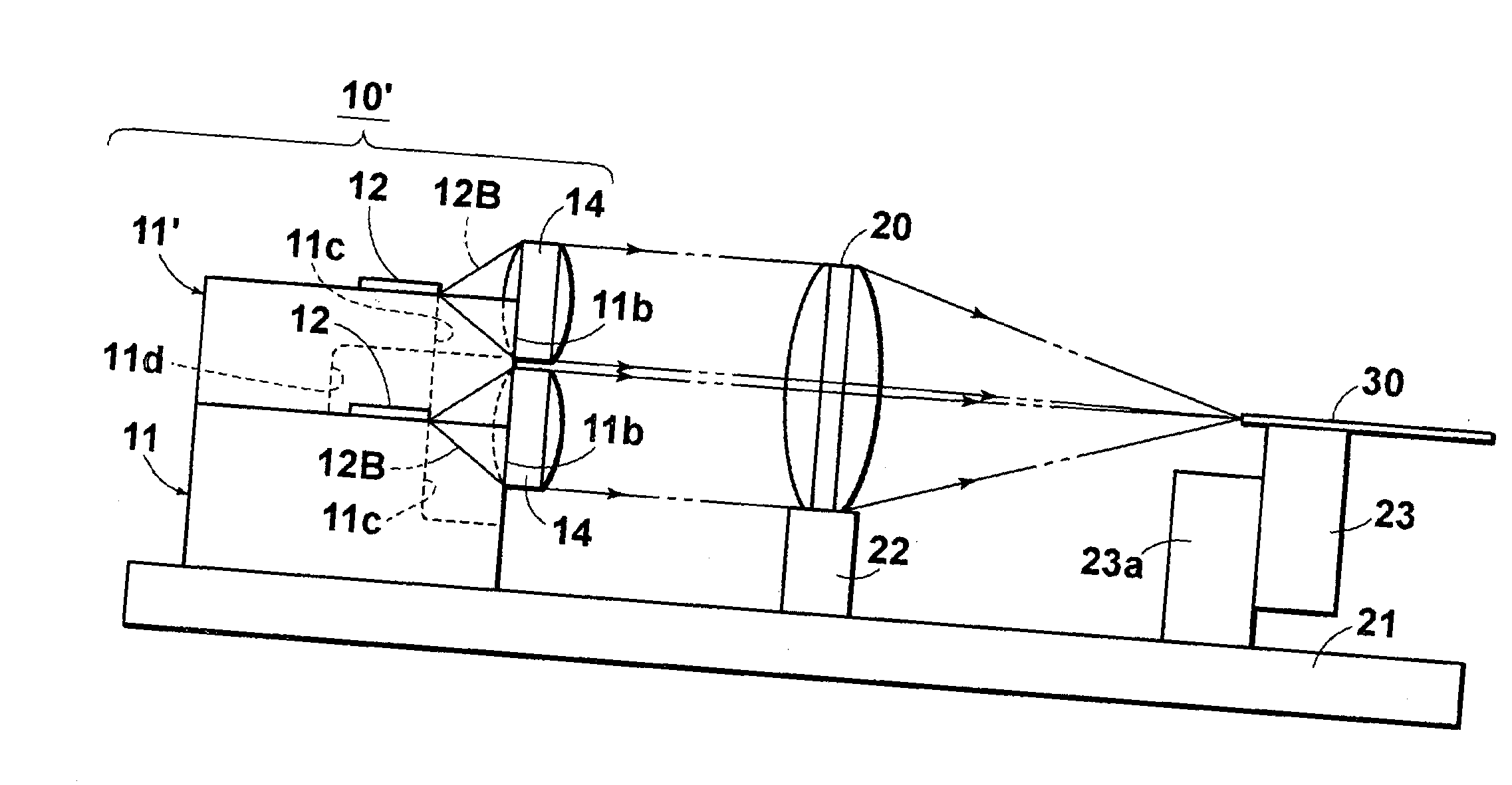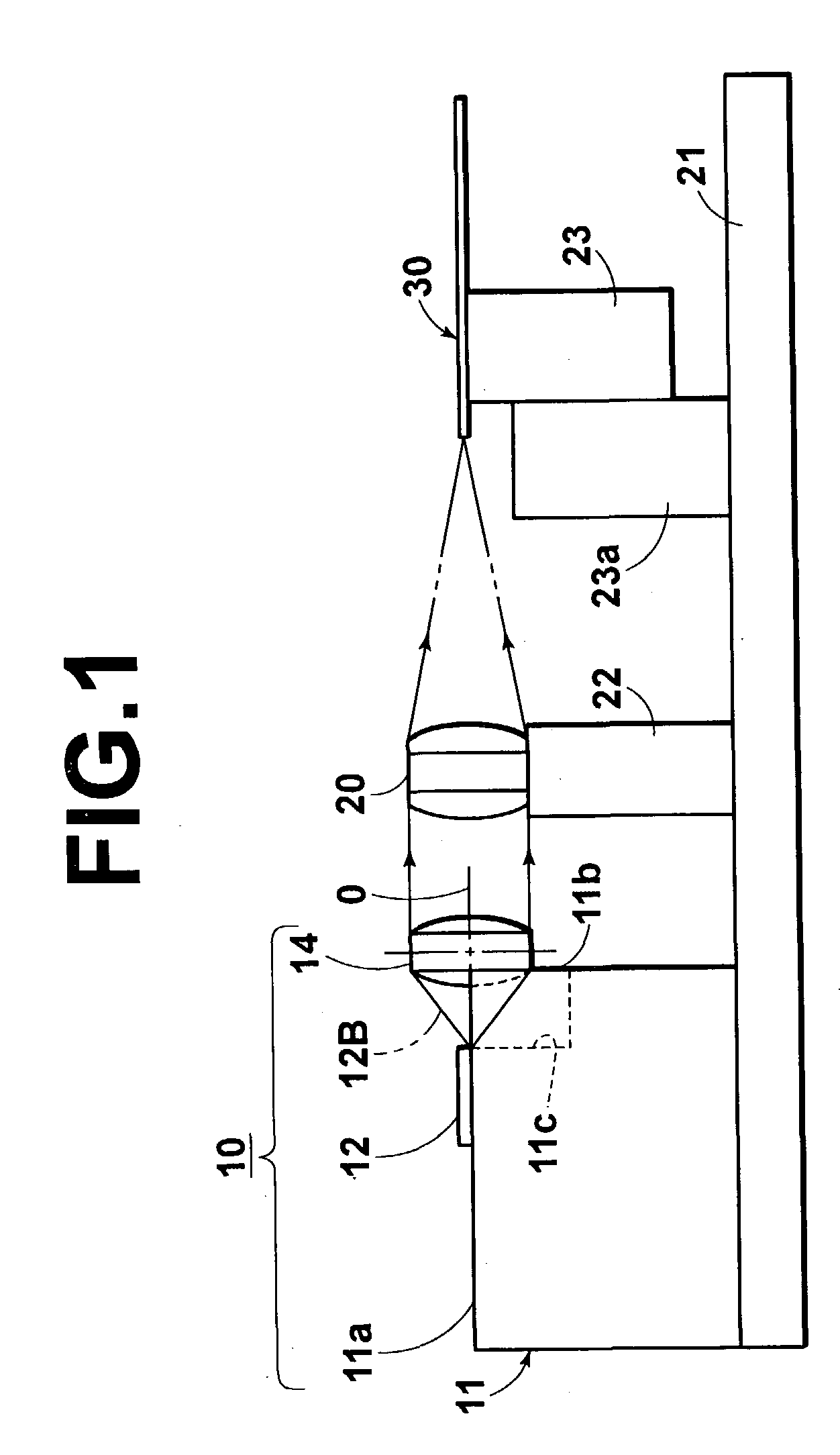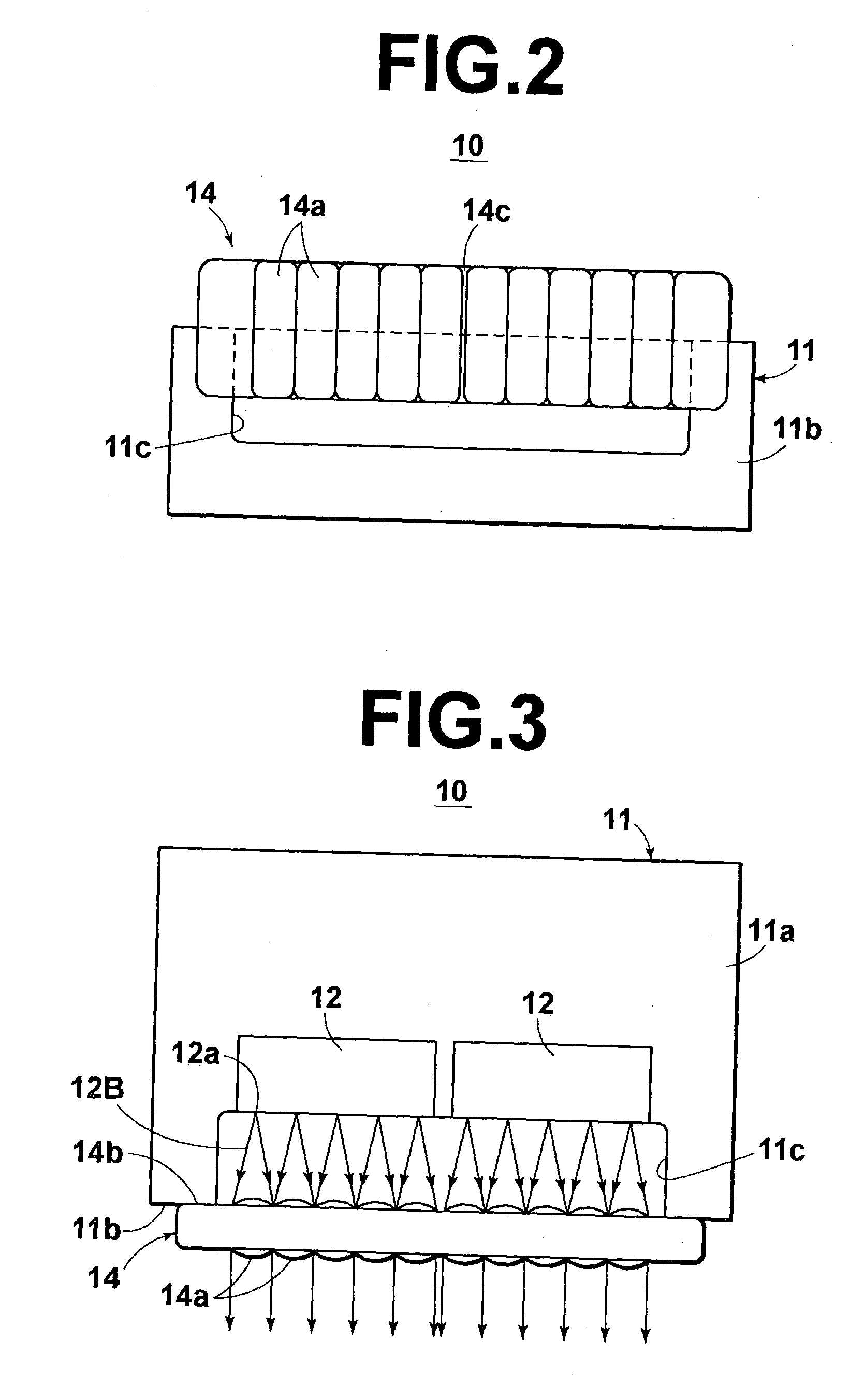Laser apparatus in which laser diodes and corresponding collimator lenses are fixed to block, and fiber module in which laser apparatus is coupled to optical fiber
a laser diode and laser diode technology, applied in the field of laser apparatus, can solve the problems of high manufacturing cost and maintenance cost of excimer lasers, large size of excimer lasers, and low wavelength conversion efficiency
- Summary
- Abstract
- Description
- Claims
- Application Information
AI Technical Summary
Benefits of technology
Problems solved by technology
Method used
Image
Examples
first embodiment
[0137] FIG. 1 is a side view of a fiber module using a laser apparatus according to the first embodiment of the present invention, and FIGS. 2 and 3 are front and plan views of the laser apparatus used in the fiber module of FIG. 1. The fiber module of FIG. 1 realizes an optically-multiplexing laser-light source. As illustrated in FIGS. 1, 2, and 3, the laser apparatus 10 according to the first embodiment comprises, for example, two multicavity laser-diode chips 12 and a collimator-lens array 14 which are fixed to a heat block (stem) 11. The heat block 11 is made of copper, and the collimator-lens array 14 is made of synthetic resin or glass.
[0138] For example, the multicavity laser-diode chips 12 each contain GaN-based laser diode having five cavities (five light-emission points 12a) and an identical oscillation wavelength of 405 nm. The multicavity laser-diode chips 12 are arranged along the same direction as the direction along which the light-emission points 12a are aligned. In ...
second embodiment
[0155] The second embodiment of the present invention will be explained below.
[0156] FIG. 4 is a side view of a fiber module using a laser apparatus 10' according to the second embodiment of the present invention, and FIG. 5 is a front view of the laser apparatus 10' used in the fiber module of FIG. 4. The fiber module of FIG. 4 realizes an optically-multiplexing laser-light source. In FIGS. 4 and 5, elements having the same functions as the elements in the fiber module illustrated in FIG. 1 bear the same reference numerals as FIGS. 1 through 3, respectively, and are not explained below unless necessary. In addition, since the plan view of the laser apparatus 10' according to the second embodiment is basically the same as the plan view (FIG. 3) of the laser apparatus 10 according to the first embodiment, the plan view of the laser apparatus 10' is not shown.
[0157] The laser apparatus 10' according to the second embodiment is different from the laser apparatus 10 illustrated in FIGS....
third embodiment
[0160] The third embodiment of the present invention is explained below.
[0161] FIGS. 6 and 7 are side and front views of a laser apparatus 10" according to the third embodiment of the present invention. The laser apparatus according to the third embodiment can be used for constructing an optically-multiplexing laser-light source. In FIGS. 6 and 7, elements having the same functions as the elements in the laser apparatuses illustrated in FIGS. 1 through 5 bear the same reference numerals as FIGS. 1 through 5, respectively, and are not explained below unless necessary. Since the plan view of the laser apparatus 10" according to the third embodiment is basically the same as the plan view (FIG. 3) of the laser apparatus 10 according to the first embodiment, the plan view of the laser apparatus 10" is not shown.
[0162] The laser apparatus 10" according to the third embodiment is different from the laser apparatus 10 illustrated in FIGS. 1 through 3 in that three layers in each of which tw...
PUM
 Login to View More
Login to View More Abstract
Description
Claims
Application Information
 Login to View More
Login to View More - R&D
- Intellectual Property
- Life Sciences
- Materials
- Tech Scout
- Unparalleled Data Quality
- Higher Quality Content
- 60% Fewer Hallucinations
Browse by: Latest US Patents, China's latest patents, Technical Efficacy Thesaurus, Application Domain, Technology Topic, Popular Technical Reports.
© 2025 PatSnap. All rights reserved.Legal|Privacy policy|Modern Slavery Act Transparency Statement|Sitemap|About US| Contact US: help@patsnap.com



